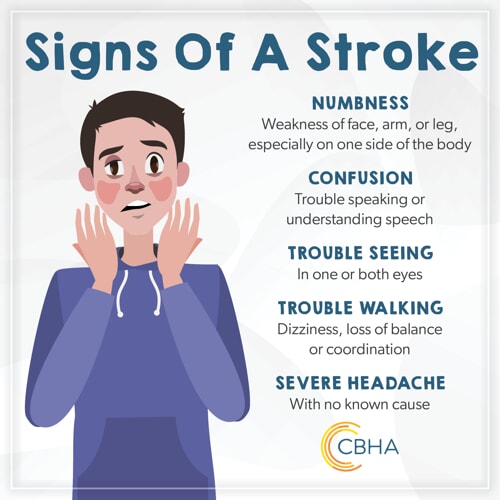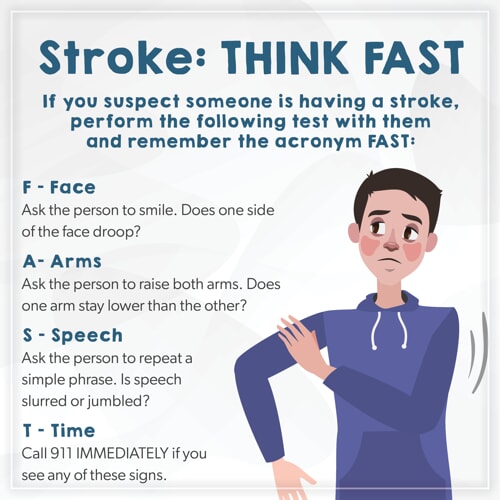Think FAST to save a life!
 Every year, strokes affect millions of lives! However, being aware and acting FAST to warning signs can significantly improve a patient's outcomes – maybe even your own. Just like putting out a fire can stop it from spreading quickly, reacting fast to a stroke can lessen the damage to the brain.
Every year, strokes affect millions of lives! However, being aware and acting FAST to warning signs can significantly improve a patient's outcomes – maybe even your own. Just like putting out a fire can stop it from spreading quickly, reacting fast to a stroke can lessen the damage to the brain.
A stroke can suddenly present itself, and it looks the same for both men and women. Keep an eye out for these five signs of a stroke.
NUMBNESS: Weakness of face, arm, or leg, especially on one side of the body
CONFUSION: Trouble speaking or understanding speech
TROUBLE SEEING: In one or both eyes
TROUBLE WALKING: Dizziness, loss of balance or coordination
SEVERE HEADACHE: With no known cause
If you suspect someone is having a stroke, perform the following test with them and remember the acronym FAST.
SIGNS OF A STROKE: THINK FAST
F - Face – Ask the person to smile. Does one side of the face droop?
A- Arms – Ask the person to raise both arms. Does one arm stay lower than the other?
S – Speech – Ask the person to repeat a simple phrase. Is speech slurred or jumbled?
T - Time – Call 911 IMMEDIATELY if you see any of these signs.

As soon as you notice symptoms in someone or yourself, make a mental note of the time it started. Some treatments can only be used if the patient reaches the hospital within the first three hours after symptoms appear. DON’T WAIT! Call 911 and get the person to the hospital immediately!
If you are the one experiencing these symptoms, DO NOT drive yourself or let someone else. Call 9-1-1 for an ambulance so that medical personnel can begin life-saving treatment on the way to the emergency room.
Strokes are a medical emergency. The sooner a patient gets treatment, the better their recovery will be.
Living a healthy lifestyle, like eating healthy foods and including physical activity into your day can help prevent a stroke. If you have underlying conditions like cholesterol, high blood pressure or diabetes, taking control of these conditions can also lower your risk. Work with your primary care provider to see what ways are best for you to maintain a healthy living.